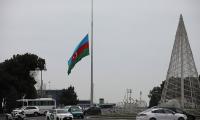ISLAMABAD: In a shocking disclosure, the unregulated surge in solar energy adoption across Pakistan is creating financial and technical challenges for the energy sector, with non-solar consumers bearing a disproportionate burden.
A new report, ‘The Distributed Divide – How Solar Expansion Affects Non-Adopting Consumers and Utility Economics’, revealed that in FY2023-24 alone, grid-dependent consumers absorbed over Rs200 billion in costs, resulting in Rs2 per kWh tariff increase. The report warns that without immediate regulatory and policy action, these burdens will intensify.
As per the study estimates, a 5pc reduction in grid demand due to solar integration will shift an additional Rs131 billion annually to non-solar consumers; this burden doubles to Rs261 billion at a 10pc reduction.
The incumbent regime has terminated power purchase agreements (PPAs) of five IPPs that would bring down the power tariff of Rs0.60 per unit and is also in talks with 18 IPPs persuading them to go on take and pay mode to further reduce the electricity rate by Rs0.70-Re1 per unit, but this expected relief in tariff has already been offset with the unregulated surge rooftop solar adoption owing to which non-solar consumers’ tariff has increased by Rs2 per unit. The 83-page study, conducted by ARZACHEL, also warns of a potential ‘death spiral’, a dangerous cycle where rising tariffs drive more consumers toward solar, further reducing grid demand and forcing additional tariff hikes on remaining non-solar users. To prevent this, the report stresses a suite of solutions. These include introducing fixed grid access fees to fairly distribute grid service costs, transitioning from net metering to net billing or Feed-in Tariff (FiT) systems with lower rates aligned to marginal system costs, and implementing dynamic pricing models that adjust rates in real-time based on supply-demand fluctuations. It also advocates creating a market for ancillary services to improve grid reliability, incentivising battery energy storage systems (BESS) to address renewable intermittency, and revising the Distribution Code to manage bi-directional power flows. To ensure equity, the report recommends conducting a Distributional Equity Assessment (DEA) to protect non-solar consumers from disproportionate financial impacts while modernizing tariffs to reflect fair cost allocation. These targeted reforms are critical to balancing the economic and operational sustainability of Pakistan’s energy sector with the benefits of solar energy expansion. According to the findings, solar adoption, driven by rooftop installations and behind-the-meter systems, has reshaped the energy landscape by reducing grid demand by 8-10pc during daylight hours. Solar users are avoiding costs of up to Rs20 per unit for net-metering setups and Rs7 per unit for behind-the-meter installations. While this benefits solar adopters, it leaves the fixed costs of grid maintenance and infrastructure upgrades to non-solar consumers. The study proposes a minimum bill of Rs1000 per KW per month for domestic net-metering users, and Rs2500 per KW per month for Industrial and commercial consumers using net-metering ensuring that they contribute to the cost of grid maintenance even if they offset most of their consumption through self-generation. This transition has also introduced technical challenges for distribution companies (DISCOs), including voltage instability, reverse power flows, and growing demand for frequency regulation and reactive power support. These issues, compounded by declining revenues, require significant infrastructure investment. The study says if solar penetration and installation rates continue at their current pace, it is predicted that the Pakistan grid will experience a “duck curve” within the next two years. The grid will face significant challenges in maintaining energy stability during the coming winter, especially on clear days, due to insufficient flexible resources to manage the high levels of distributed solar generation. This uneven demand pattern complicates grid management and escalates costs, putting further strain on already stretched resources. Approximately 438.46 GWh of energy was procured by DISCOs through net metering in FY 2023-24, displacing 9,942 GWh of grid demand due to both net-metering and behind-the-meter solar generation. The study also mentions that high distributed solar generation poses challenges for the grid, such as voltage instability, reverse power flows, and increased demand for ancillary services like frequency regulation and reactive power support. These changes require infrastructure adjustments and careful demand balancing to maintain grid stability and efficiency.
Five thousand kilogrammes of hashish, heroin, bhang and ice worth Rs2,634.44 million were destroyed
Programme approved during recent UAE government annual meetings under directives of Emirates Genome Council
Atta Tarar congratulated Pakistan team on winning ODI series against South Africa
PIA spox says airline was working to rejuvenate its aircraft, bringing them back into operational fleet
Authorities confirm driver’s death, saying he “committed suicide while the train was moving”
Murad stresses need to protect country from external conspiracies, in line with Jinnah’s vision







